Ever watch your dog hiccup and feel torn between worry and a laugh? Those tiny squeaks and belly jumps look cute, but they can make any pet parent nervous.
Most of the time, hiccups are simple spasms of the diaphragm. They’re common, especially in puppies that eat fast or get excited. They usually pass in a few minutes, and they’re rarely a sign of something serious.
Still, it helps to know what to do in the moment. With a few simple tricks for stopping hiccups in dogs, you can keep your pup calm and comfortable, and you can feel more in control.
In this guide, you’ll learn what causes dog hiccups, how to use easy at-home fixes, when it’s time to call your vet, and how to prevent repeat episodes. We’ll stick to safe, vet-friendly steps you can try right away.
If you’re ready to help your pup breathe easy, you’re in the right place. Let’s get you the quick answers you need and help those hiccups fade fast.
What Causes Hiccups in Dogs? Understanding the Basics
Hiccups in dogs start with a tiny spasm of the diaphragm, the muscle that helps pull air into the lungs. When that muscle fires off by mistake, the vocal cords close, which creates the little squeak you hear. Knowing the common causes of hiccups in dogs makes it easier to choose simple tricks for stopping hiccups in dogs and keep your pup calm.
How the Diaphragm Triggers Hiccups
The diaphragm moves down as your dog inhales, then relaxes as they exhale. Irritation of this muscle or the nearby nerves can spark quick, repetitive contractions. Each spasm pulls in a burst of air, the vocal cords snap shut, and a hiccup pops out. It works the same way in dogs and humans.
Common Triggers
Most hiccups are short and harmless. These are the usual suspects:
- Fast meals or gulps of water: Quick eating or drinking leads to swallowed air, which can irritate the diaphragm.
- Excitement or stress: Big emotions speed up breathing and can set off spasms.
- Temperature changes: Cold water, a chilly room, or moving from hot to cool air can start hiccups.
- Allergies and irritants: Smoke, strong scents, dust, or pollen can tickle the airways.
- Post-exercise breathing: Hard play and rapid panting often come with a few hiccups.
- Stomach upset or mild reflux: Extra acid can bother the esophagus and diaphragm.
- Puppy growth: Young dogs hiccup more as their nervous system matures.
A quick example: a puppy racing to the bowl, gulping water after fetch, then flopping under an air vent will check three boxes at once.
When Hiccups Are Not So Harmless
Call your vet if hiccups last longer than an hour, happen daily, or come with cough, wheezing, nasal discharge, vomiting, poor appetite, or low energy. Frequent or prolonged episodes can point to airway irritation, parasites, gastrointestinal problems, or heart and lung disease. Short bouts are normal; patterns and extra symptoms are the red flags.
Easy At-Home Tricks to Stop Your Dog’s Hiccups Quickly
These are the core, safe, simple tricks for stopping hiccups in dogs. Pick one method, stay calm, and watch your dog for signs of stress. If you are unsure about any step, or your dog has breathing trouble, talk to your vet first.
Slow Water Sips: A Gentle Way to Ease the Spasms
Small sips of room-temperature water can interrupt the hiccup cycle. Hydration soothes the throat and helps the diaphragm settle.
Try this:
- Offer a shallow bowl with room-temperature water. Avoid ice water.
- Let your dog take tiny sips at their own pace.
- If you need more control, use a turkey baster or syringe without a needle. Gently drip water along the lip line, one drop at a time.
Why it may work: slow sipping changes the rhythm of breathing and swallowing, which can pause the spasm.
Important safety:
- Do not force their mouth open.
- Stop if they resist or pull away.
- Keep the head in a natural position to reduce the risk of aspiration.
Gentle Chest Massage for Instant Relief
A light massage can relax the diaphragm and chest muscles. Your touch can also shift your dog from alert to calm, which helps the spasms pass.
How to do it:
- Place your hand on the chest, just below the neck.
- Use small circular motions with gentle pressure for 1 to 2 minutes.
- Breathe slowly and speak in a calm, low voice to keep your dog relaxed.
- Repeat if hiccups return, but give a short break between tries.
Why it may work: tension eases, breathing steadies, and the spasm loop can stop.
Tips:
- Keep movements slow and steady.
- If your dog is ticklish, move your hand slightly lower or soften your touch.
Controlled Breathing Technique with Nose Hold
This is for confident, trusted handling only. The idea is to mimic a brief breath-hold to reset the diaphragm.
Steps:
- Sit close and keep your dog settled with one hand on the chest.
- With two fingers, gently cover both nostrils for 1 to 2 seconds while you stroke the throat downward.
- Release, let them take a breath, and praise softly.
- You can repeat once or twice, with a few seconds of rest between.
Why it may work: that short pause can reset the breathing pattern and calm the spasm.
Safety rules:
- Keep it very brief. Never hold longer than a couple seconds.
- Stop at any sign of distress or struggle.
- Skip this method if you are unsure, your dog is anxious, or has any breathing issues. Ask your vet first.
Mild Distraction with Soft Sounds
A quick, gentle surprise can break the hiccup pattern without fear.
What to try:
- Make a soft clap or brief whistle from a few feet away.
- Keep your face relaxed, then praise and offer a small treat.
- Follow with calm petting or a short sit command to reset focus.
Why it may work: a mild startle shifts attention and breathing rhythm, which can stop the spasms.
Keep it kind:
- Avoid loud noises or sudden moves near the face.
- One or two tries is enough. If it does not work, switch methods.
Calm Cuddling to Let It Pass Naturally
Sometimes the best fix is patience. Stress can make hiccups linger, so calm cuddling can help them fade.
How to set the scene:
- Move to a quiet spot with low light and few distractions.
- Hold or sit beside your dog, and pet in long, slow strokes.
- Match your breathing to a slow rhythm. Your dog often follows your lead.
Why it may work: when the body relaxes, the diaphragm relaxes. The hiccups often stop on their own.
Good to know:
- This is ideal for mild, brief hiccups in relaxed dogs.
- If episodes are frequent or last longer than an hour, call your vet.
Using one or two of these simple tricks for stopping hiccups in dogs will handle most short bouts. Keep it gentle, watch your dog’s comfort, and seek vet advice if anything feels off.
When Should You Worry? Signs to See a Vet for Dog Hiccups
Most hiccups fade on their own, especially after simple tricks for stopping hiccups in dogs like water sips or calm cuddles. Still, some patterns point to a bigger issue and call for a vet visit.
Red Flags That Need a Vet
Watch the clock and your dog’s comfort. These signs mean it is time to call your vet:
- Hiccups lasting over 30 minutes or hiccups in dogs that won’t stop
- Hiccups paired with cough, wheeze, or noisy breathing
- Vomiting, gagging, or drool that will not quit
- Lethargy, fainting, blue gums, or rapid breathing at rest
- Poor appetite, weight loss, belly swelling, or repeated diarrhea
These symptoms can be linked to airway irritation, respiratory infection, heart disease, parasites like heartworm or roundworms, or reflux that needs treatment.
| Sign you see | Possible concern |
|---|---|
| Long hiccup spells | Irritated airways, reflux, nerve irritation |
| Hiccup plus cough or wheeze | Tracheal or lung problem, infection, allergies |
| Vomiting or gagging | GI upset, reflux, foreign body |
| Low energy or blue gums | Heart or lung disease, low oxygen |
| Weight loss or pot-belly | Parasites, chronic illness |
Puppies and Seniors: Act Faster
Call your vet right away if your dog is under 6 months or a senior. Puppies have smaller airways and immature reflexes. Older dogs are more prone to heart and lung issues. Do not wait on prolonged or frequent episodes in these ages.
What to Track and Tell Your Vet
Good notes help your vet move fast and avoid guesswork. Share:
- When it started, how long it lasted, and how often it repeats
- Triggers you noticed, like eating, exercise, cold water, or stress
- Breathing signs, cough, nasal discharge, gagging, or vomiting
- Appetite, energy level, stool changes, and any recent weight loss
- Any recent travel, new foods, smoke exposure, or parasite prevention status
- What you tried at home and what happened
Early care beats watchful waiting when red flags show up.
Preventing Hiccups in Dogs: Simple Daily Habits for Happy Pets
You can prevent hiccups in dogs with a few steady routines. These habits support calm breathing, reduce swallowed air, and protect sensitive airways. They also build a healthy base, which makes simple tricks for stopping hiccups in dogs work even better when you need them.
Smart Mealtime Habits
Fast eating is a top trigger. Slow the pace and keep the vibe relaxed.
- Use a slow-feed bowl or puzzle feeder to curb gulping.
- Split meals into two to three smaller portions.
- Keep kids and pets from zooming near the bowl during meals.
- Serve room-temperature water and avoid ice-cold drinks right after play.
Example: a slow-feed bowl plus a two-minute sit before dinner often stops hiccups tied to excitement and air swallowing.
Keep Temps and Air Calm
Sudden changes can spark spasms. Aim for steady comfort.
- Keep room temperature consistent when possible.
- Skip blasts of AC, heaters, or fans aimed at your dog.
- Reduce irritants like smoke, strong candles, and heavy cleaners.
Clean, stable air eases the airway and the diaphragm.
Daily Movement and Stress Relief
Balanced activity steadies breathing and mood.
- Take regular walks and add short training games.
- Build a cool-down routine after fetch or zoomies.
- Offer chew time or sniffy walks to lower arousal.
A calm body hiccups less, and recovery is faster.
Hydration, Posture, and Pace
Small details prevent flare-ups around meals and play.
- Offer frequent water breaks during exercise.
- Raise the bowl slightly for deep-chested dogs, but keep the neck neutral.
- Encourage rest after eating, not wrestling or racing.
Checkups and Allergy Control
Hidden triggers often hide in the nose or gut.
- Book annual vet visits and keep parasite prevention current.
- Ask about allergies if you see itching, sneezing, or discharge.
- Review diet for simple ingredients and steady routines.
Healthy airways and a calm gut make hiccups rare. Keep these habits daily, and you will prevent hiccups in dogs before they start.
Conclusion
Most dog hiccups are harmless and short, and that is good news. With simple tricks for stopping hiccups in dogs, you can calm those spasms fast. Offer slow sips of room-temperature water, try a gentle chest rub, use a mild distraction, or settle in for quiet cuddles. Keep it calm, keep it brief, and always watch your dog’s comfort.
If hiccups last a long time, repeat often, or come with cough, breathing noise, vomiting, or low energy, call your vet. Trusted care beats waiting when something feels off. You know your dog best, and you are doing a great job.
Ready to try a few safe steps at home? Share what worked for your pup in the comments, and subscribe for more vet-friendly tips that keep tails wagging. Your steady, simple care makes all the difference.
Quick Fixes for Dog Hiccups: FAQ
What causes hiccups in dogs?
Hiccups happen when the diaphragm spasms. Common triggers include eating fast, gulping air, excitement, stress, or sudden temperature changes. Puppies get hiccups more than adult dogs.
Are dog hiccups normal?
Yes, most are normal and short. They often stop in a few minutes and do not hurt.
What simple trick stops hiccups fast?
Help your dog slow their breathing. Try calm petting, quiet time, and soft talk. Many hiccups stop once your dog relaxes.
Can a sip of water help?
Yes. Offer a small sip of room temp water. Do not force water and do not tilt the head back.
Should I give a small snack?
A small, soft treat can reset the breathing rhythm. Use bite-size pieces to prevent gulping.
Will gentle chest or belly rubs work?
Often, yes. Rub the chest or upper belly in slow circles. This can relax the diaphragm and ease spasms.
Is a short, calm walk a good idea?
Sometimes. A slow sniff walk can steady breathing. Avoid intense play until hiccups stop.
Can I use honey or peanut butter?
A tiny lick can soothe a throat tickle. Use plain honey or xylitol-free peanut butter. Skip this for diabetic dogs or puppies under 8 weeks.
Should I try to hold my dog’s nose or scare them?
No. Do not block airflow, startle, or hang your dog upside down. These can cause harm.
How do I stop meal-related hiccups?
Feed smaller, more frequent meals. Use a slow-feeder bowl. Add water to dry food to reduce gulping. Let food warm to room temp.
Can I burp my puppy after meals?
Yes, for gulpers. Hold upright against your chest and gently pat the upper back. Stop if your puppy resists or seems distressed.
Do brachycephalic breeds get hiccups more?
They can. Short-nosed breeds swallow more air. Slow feeding and calm routines help.
When should I call the vet?
Call if hiccups last longer than one hour, happen daily, or come with cough, nasal discharge, drooling, trouble breathing, blue gums, fever, vomiting, or clear pain. Trust your gut if your dog looks unwell.
Could it be reverse sneezing or retching instead?
Maybe. Reverse sneezing sounds like rapid snorting. Retching looks like gagging. If you are unsure, record a video for your vet.
Any prevention tips?
Keep mealtimes calm. Use slow-feeders. Offer water breaks after play. Cool down gently after exercise. Avoid sudden food or temperature swings. Keep your dog hydrated.
Do hiccups hurt dogs?
They usually do not. If your dog seems anxious, painful, or short of breath, seek care.


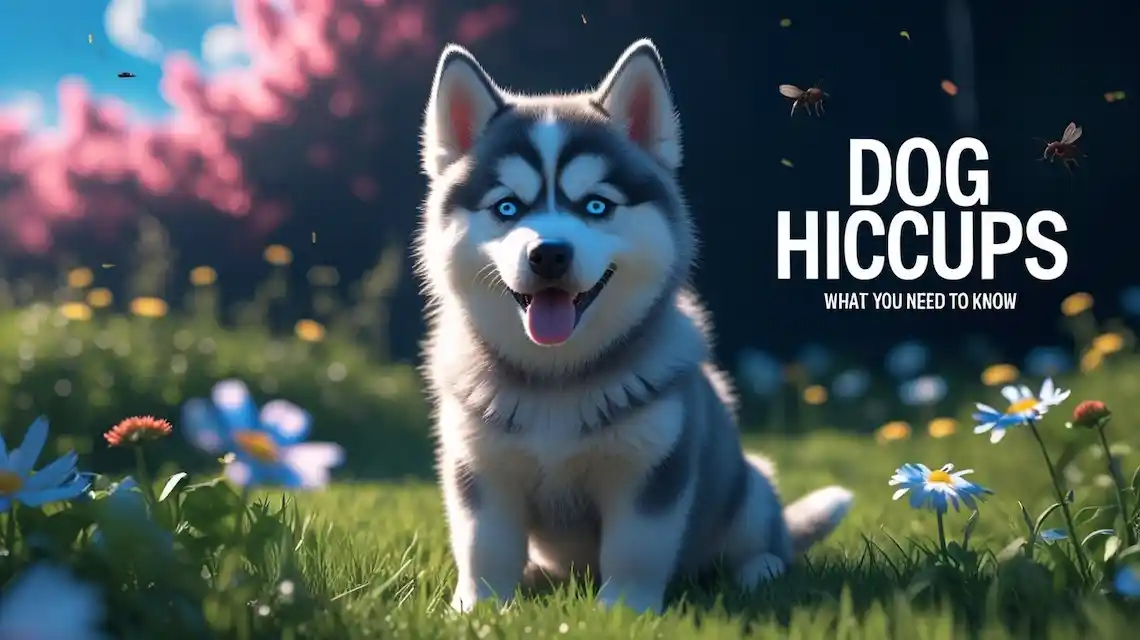

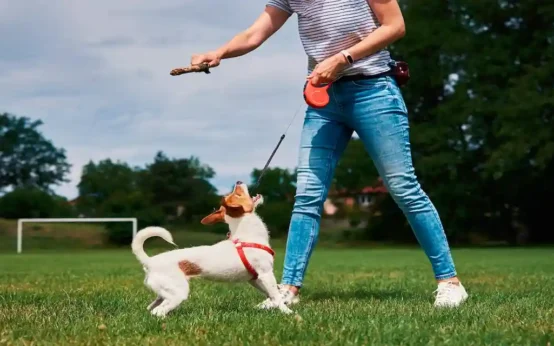 Dog Trick Training for Beginners
Dog Trick Training for Beginners 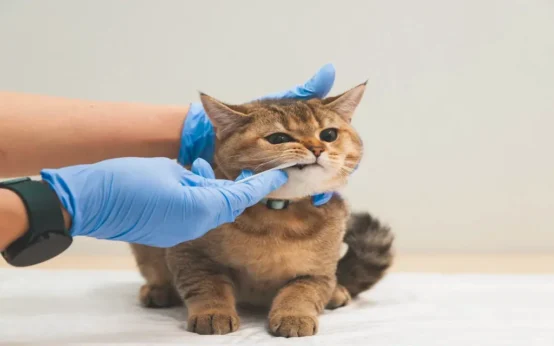 Gingivitis Cats Symptoms Every Pet Parent Should Know
Gingivitis Cats Symptoms Every Pet Parent Should Know  How to Make Dog Cookies at Home
How to Make Dog Cookies at Home  Wet Food or Dry Food for Cats?
Wet Food or Dry Food for Cats? 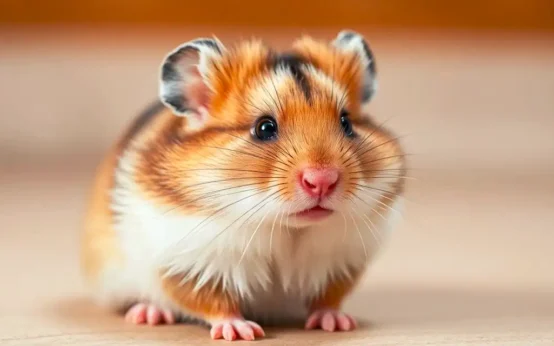 What Is the Healthiest Hamster Breed for Your Home?
What Is the Healthiest Hamster Breed for Your Home? 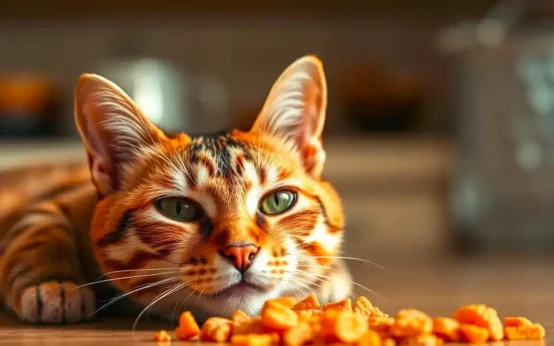 Cat Food Intolerance Symptoms: How To Spot Them Early
Cat Food Intolerance Symptoms: How To Spot Them Early